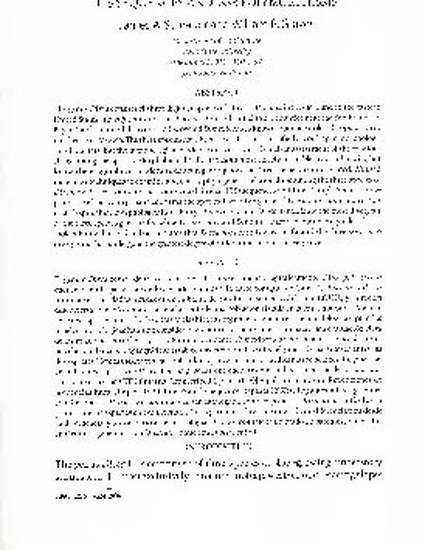
Article
Systematics of Dirca (Thymelaeaceae) based on its Sequences and ISSR Polymorphisms
SIDA
Document Type
Article
Disciplines
Publication Version
Published Version
Publication Date
12-28-2004
Abstract
The genus Dirca consists of three disjunct species of shrubs. Dirca palustris is found in the eastern United States and adjacent Canada; D, occidcntahs is Umited to six counties near the San Francisco Bay in California; and the recently discovered D, mcxicana is known from one isolated population in northeastern Mexico. The three species have been described and classified according to morphological characters, but the morphological evidence does not provide a clear assessment of the relationships among the species. Morphologically D. mexicana most closely resembles D. occidenlalis., but known biogeographical trends raise doubt regarding how the three species are interrelated. We used molecular techniques to examine and clarify phylogenetic relationships among the three species of Dirca. Evidence from Internal Transcribed Spacer (ITS) sequences and Inter-Simple Sequence Repeats (ISSR) polymorphisms confirms the species-level divergence of Dirca mexicana and reveals that, despite their morphological similarity D. mexicana and D. occidenlalis -cue the most divergent of the three species genetically while D, me.xicana and D. palustris are the most closely related. The molecular evidence also demonstrates that Dirca occidenlalis was the first of the three species to diverge and has undergone the greatest degree of differentiation since divergence.
Copyright Owner
The Botanical Research Institute of Texas, Inc.
Copyright Date
2004
Language
en
File Format
application/pdf
Citation Information
James A. Schrader and William R Graves. "Systematics of Dirca (Thymelaeaceae) based on its Sequences and ISSR Polymorphisms" SIDA Vol. 21 Iss. 2 (2004) p. 511 - 524 Available at: http://works.bepress.com/william_graves/19/

This article is from SIDA, 21(2):2004: 511-524. Posted with permission.